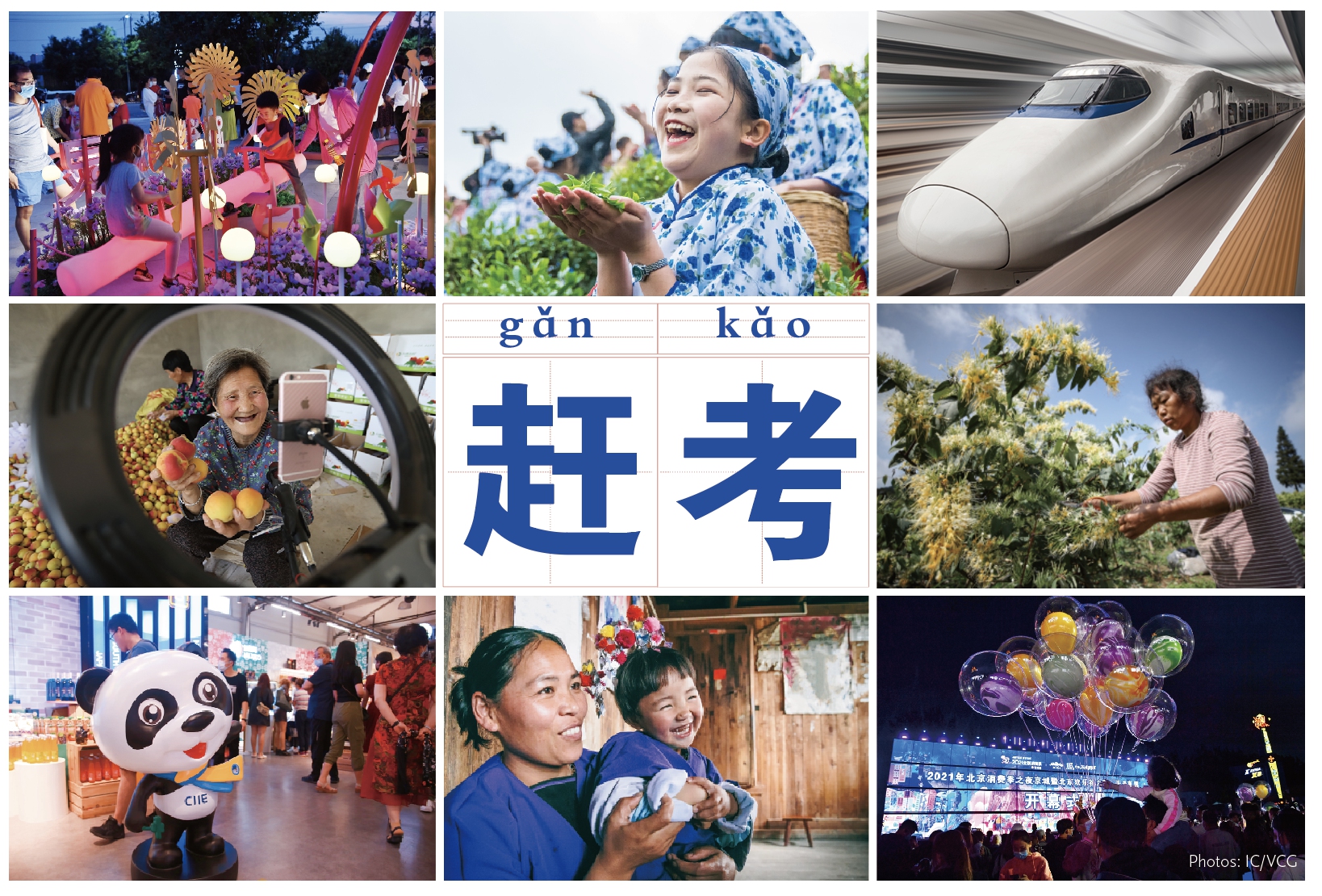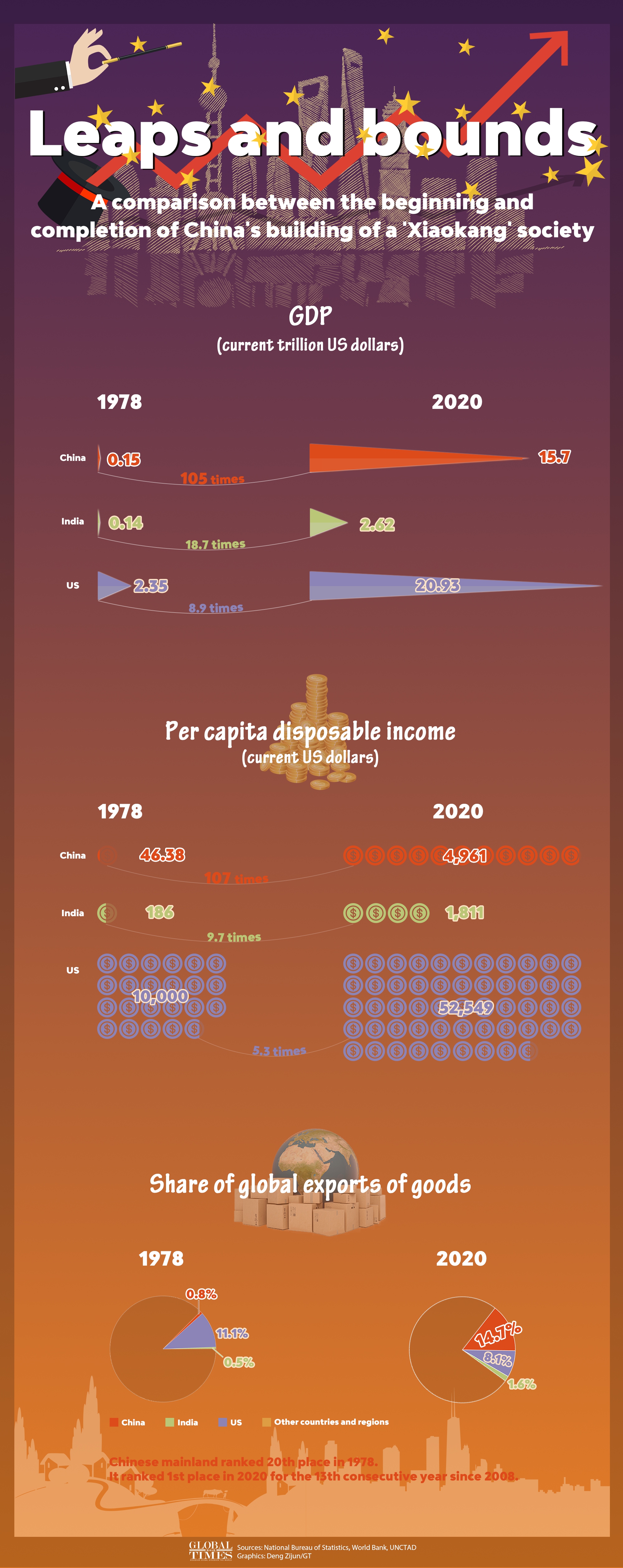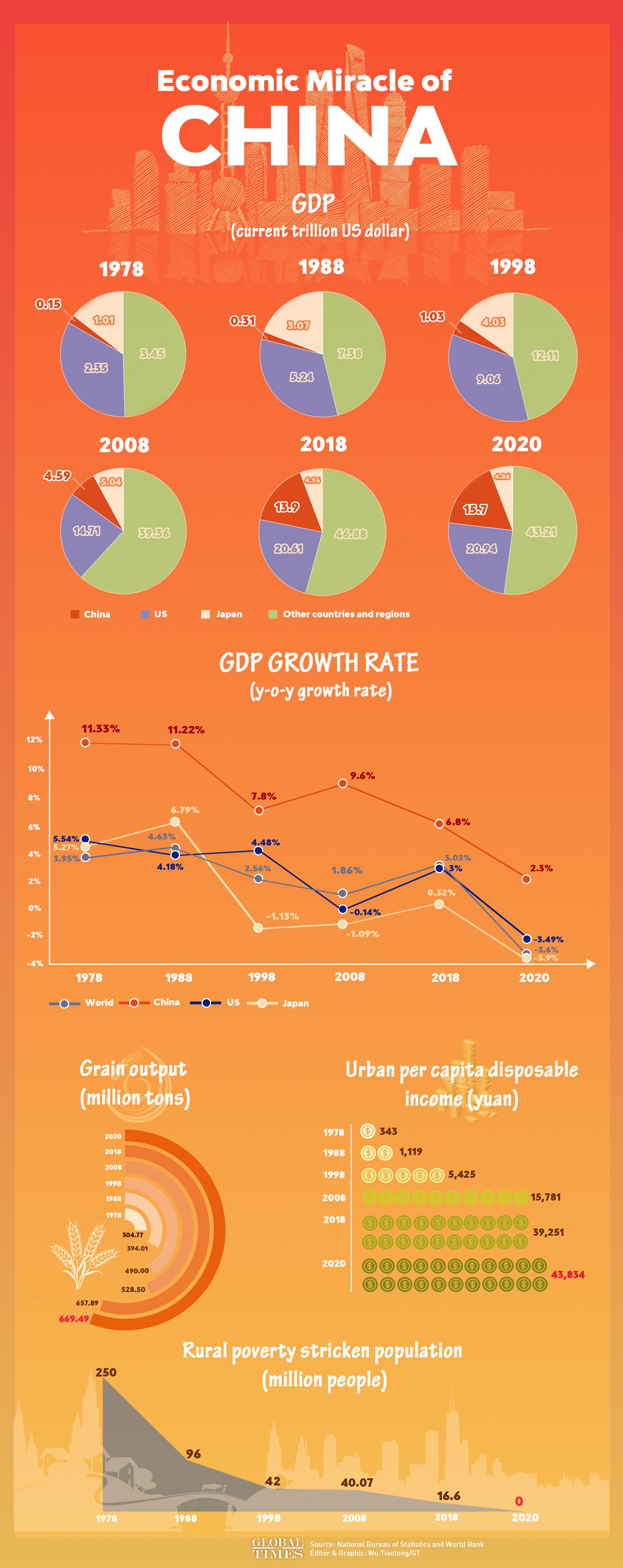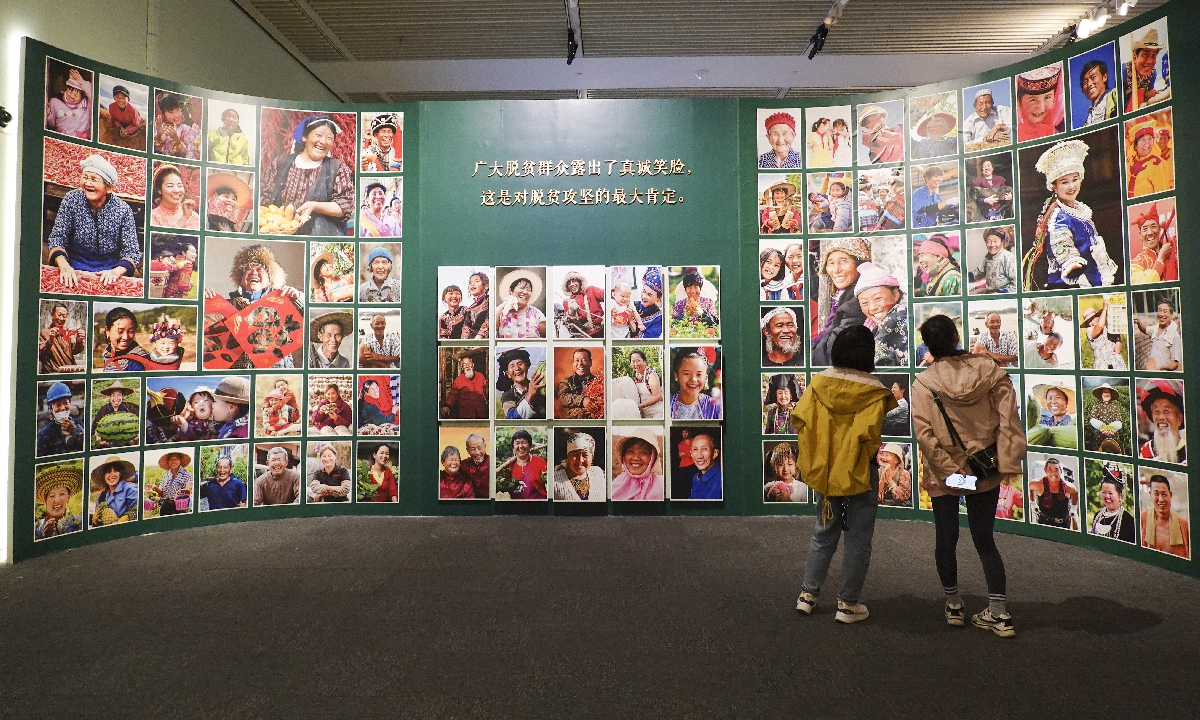China on July 1 declared that it has reached its first centenary milestone development goal – building a moderately prosperous society, or xiaokang, in all respects and is marching in confident strides toward the second centennial goal of building China into a great modern socialist country. To decipher what that means in the context of where China is now and where it’s heading, the Global Times will publish a series of articles about the achievements under the xiaokang goal in various aspects. This is the first piece, which focuses on China's economic miracle and its future prospects.


In 1978, China’s GDP stood at around $149.5 billion, just slightly higher than India’s $137.3 billion and a fraction of the US’ $2.35 trillion.
In 2020, China’s GDP reached 101.6 trillion yuan ($15.7 trillion), nearly six times that of India’s $2.62 trillion and over 70 percent of the US’ $20.94 trillion.
In 1978, China’s share of global exports of goods was less than 1 percent, not comparable to the then world’s biggest trading country – Germany’s 11.9 percent. The Chinese mainland ranked the 20th – behind the Hong Kong Special Administrative Region and Poland.
In 2020, China was the world’s biggest trading nation, with its share of global exports of goods reaching 14.7 percent – nearly twice the size of the US’ share of 8.1 percent.
1978 is widely known as the start of China’s reform and opening-up policies that created the Chinese economic miracle. But a lesser known fact is that one year later, building xiaokang – a 2,500-year-old concept meaning a moderately prosperous society – was first used to describe the overarching goal of China’s social and economic development.
2020 was a year of human suffering and hardship brought about by the COVID-19 pandemic. But it was also a year marked by a historical achievement for human society, with the completion of the first centennial goal set by the Communist Party of China (CPC) of lifting hundreds of millions of people out of extreme poverty and improving lives for one-fifth of humanity.
After months of review and assessment, at the CPC’s centennial celebration on July 1, Xi Jinping, general secretary of the CPC Central Committee, solemnly declared: “We have realized the first centenary goal of building a moderately prosperous society in all respects.”
Since China’s rapid economic rise, there has been no shortage of analysis and assessment of China’s economic success, including some rather derogatory and pessimistic views about the Chinese economy which doomsayers say is about to collapse. However, almost all economic and social development indicators known to humans point to nothing less than a miracle.
There has also been no shortage of discussions and studies on what exactly contributed to such miraculous economic achievements, with some in the West even having the audacity to suggest that China’s success somehow is built on taking advantage of the West. Some critics also accused China of being complacent over its achievements from the past and downplaying the risks ahead.
While there may be a confluence of contributing factors, the deciding factor is the ability of the CPC to not only set up bold, long-term goals but also to meet them on time. That is reflected in a phrase from the CPC’s lexicon: gankao – an ancient phrase describing students making long journeys to take the biggest exam of their lives – the personification of the CPC’s constant struggle to meet challenges.
The metaphor of gankao (“Go for a big exam”) used by Chairman Mao Zedong in 1949 before leaving the Xibaipo, a sacred place for the CPC, for Beijing to found the People’s Republic of China, has become a guiding mindset and reminder of its founding principles for the CPC as it begins a new journey to reach the second centennial goal.
The gankao mentality was not only core to the setting and completing of the xiaokang goal that made the Chinese economic miracle, but is also the key to the setting and pursuit of the second centennial goal through 2049 of building China into a modern socialist power, analysts noted.
Passing the next big exam could be another miracle, as it would mean that China will not only become the world’s biggest economy soon, but also a true global power of peace and development for the long run, they noted.

There may be many different views of China’s economy, but no one can deny the countless indicators and numbers that point to China’s economic success.
“China’s economic achievement in the past four decades is unprecedented, and it is not an exaggeration to call it a miracle,” Yao Jingyuan, former NBS chief economist, told the Global Times.
One of the most important and tangible indexes to gauge China’s metric ascent is the GDP, which has ballooned 174 times in 70 years and maintained an annual high growth rate over 9.2 percent since 1978 – in the following year, the late Chinese leader Deng Xiaoping first used the xiaokang concept to describe China’s social and economic development goal. The world’s average growth was below 3 percent for that period.
On a global scale, China has been embarking on a four-decade economic takeoff: it gained the slot as the world’s 7th largest economy in around 1980; in around 2005, it overtook that of France; it surpassed Germany as the world’s third-largest economy in 2007, and in 2010, it beat Japan to be the world’s second-largest economy, trailing only after the US.
“It is unimaginable that a country with a population of more than 1 billion, or nearly a fifth of the total world population, could complete industrialization in seven decades, while countries like the UK and the US took several centuries to complete,” Wei Jianguo, a former Chinese vice minister of commerce and executive deputy director of the China Center for International Economic Exchanges, told the Global Times.
Beyond economic expansion, the miraculous achievements are also reflected in constant improvements in living conditions for 1.4 billion Chinese under the xiaokang goal.
As a crucial part of the xiaokang goal, China lifted 770 million people - roughly the equivalent of the combined population of the US, Indonesia and Pakistan (the world's third, fourth and fifth most populous countries) - out of poverty, accounting for 70 percent of the global population that has been lifted out of poverty during the period.
In 2020, Chinese people's per capita disposable income skyrocketed 648 times to 32,189 yuan ($4,961), signaling that China has made the historical stride from lacking basic living necessities to being basically well-off, and to the completion of a moderately prosperous society. The per capita income of neighboring India was $1,811 and that of the US was $52,549 the same year.
In 1978, China’s per capita disposal income was only 300 yuan ($46.38), which was far below the US’ of close to $10,000 at that time. It was also significantly lower than India’s $186.
In 2020, China’s per capita GDP also exceeded $10,000 for two consecutive years, making it one of the upper-middle-income countries with a rapidly-rising consumption market, to the envy of the world.


The miraculous achievements are the result of the “gankao spirit” of the CPC, which describes the Party’s boldness in setting ambitious goals for the world’s most populous nation and its fearless attitude in dealing with tests and challenges, as well as its sense of crisis in being mindful of potential dangers and being fully prepared for any eventualities with cautiousness.
Putting forward a vision of xiaokang was a very bold move back in 1979, at a time when a large section of the Chinese population was living under the poverty line, plagued by hunger, a lack of clothes and other basic necessities, but the top vision has also held the country together to launch a series of reforms that have seen its development potential being brought into full play.
“The concept of xiaokang could be compared to a beacon, a top design that inspires the Party and its people to strive for a common goal. The Chinese people know what they are pursuing, and the central government, based on this, breaks down the target, sets numerical goals step by step and makes adjustments in a dynamic manner,” Tian Yun, former vice director of the Beijing Economic Operation Association, told the Global Times.
In 1982, the 12th National Congress of the CPC officially set the achievement of Xiaokang as a goal. Xiaokang was then included in the country's three-step strategic plan for economic development.
The 16th CPC National Congress in 2002 formally proposed "building a xiaokang society in all respects."
In 2012, the 18th CPC National Congress expanded the goal of xiaokang society to focus on five aspects: economic, political, cultural, social, and ecological progress. It updated the numerical standards for achieving a xiaokang society: to double the GDP and per capita income for both urban and rural residents from 2010 to 2020.
China has surpassed many of the goals, including economic growth, income growth and social and ecological progress. By any measure, the CPC not only passed the “big exam” of xiaokang, but actually over scored by creating an economic miracle, analysts noted.
“This is undoubtedly a miracle, not only in terms of the scale but also the speed in human history,” Wei said.

While the celebrations of the historical achievements of the past century inspired widespread pride and confidence among the 1.4 billion Chinese, there is also the sobering reminder that the path ahead is still long and could be bumpy as the country aims for common prosperity and national rejuvenation.
During his speech on July 1, Xi, who is also Chinese president and chairman of the Central Military Commission, made clear the CPC stands ready to face new tests and challenges and pursue greater achievements in what he called a “new journey of gankao.”
“Over the past century, the Communist Party of China has secured extraordinary historical achievements on behalf of the people. Today, it is rallying and leading the Chinese people on a new journey toward realizing the second centenary goal,” Xi said.
Looking ahead, the decisive victory in building a xiaokang society has laid a solid material foundation and provided a strong guarantee for embarking on a new journey to fully build a modern socialist China by the middle of the century – also the 100th birthday of the PRC.
Under the top design, the CPC leadership has released the new goals for the 14th Five-Year Plan (2021-25) and Long-Range Objectives through the Year 2035, including shortening income gaps, basically achieving socialist modernization and per capita GDP reaching the level of medium-level developed country – around $20,000 to $30,000 – by 2035.
In parallel, China will also strive to build a society of common prosperity by 2030 and this construction will be completed by 2040, by which time China will steadily embark on the final-decade endeavor of the second centenary goal.
Analysts estimate that China needs to maintain a GDP growth rate above 4.72-4.73 percent in the next 15 years for the goal to remain on trajectory.
That means China could take over the US to become the world’s largest economy at around 2030, said Hu Qimu, chief research fellow at the Sinosteel Economic Research Institute. And by 2035, China’s major economic indexes – including GDP, per capita GDP, and consumer market size – will be double those in 2020, according to Yao.
Yao stressed that the future path of development to the second centenary goal will be “drastically different” from that in the past four decades.
“The first miracle has featured the stunning rate of economic growth, as China needed a super high-speed growth to quickly help its people to get rid of poverty and provide them with adequate food and clothing,” Yao said.
“The development over the next three decades will be led by high-quality growth and will be innovation-driven. It is also a green, balanced, and more open model,” Yao noted.
Hu told the Global Times that by 2049, the sheer size of China’s economy will be leading the world, and is estimated to account for one third of the global size. That’s compared with the US’ share of global GDP, which made up one quarter of the world economy in 2020.
That will also show that China plays a “central and pivotal role” in leading the world’s peaceful development and building a community with shared future for mankind, as Xi proposed.
However, amid mounting uncertainty and flaring up of geopolitical tensions, some media and economists have raised a thorny question: will China be able to sustain its miracle over the next few decades?
The answer can be found anywhere in Chinese society – from the CPC’s fearless spirit in tackling challenges and reaching greater heights, to the illuminated skyscrapers in the Shenzhen night sky that light up the future path for a tech rise, to the speeding bullet trains propelling the country forward at a speed that stuns the world, and to millions of ordinary hard-working Chinese people who are willing to devote themselves to the future of the country.
“The very fabric of CPC leadership is to serve the people. Standing at this new historical starting point, the CPC’s pursuit to give Chinese people happy lives will not stop. We draw strength from the past, during which the CPC has endured great hardship and made brilliant achievements, and will continue marching in a fearless manner for the rejuvenation of the Chinese nation, and the common good for the world,” Hu said.